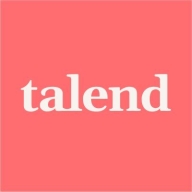

Talend Open Studio and dbt compete in the data transformation and integration category. Talend Open Studio has an advantage in cost efficiency and support, while dbt's advanced features make it worth the investment.
Features: Talend Open Studio offers comprehensive data integration tools, extensive connectivity options, and robust ETL capabilities. dbt focuses on transformation workflow, analytics engineering, and emphasizes SQL-based transformations. This focus provides dbt with agility in scenarios that prioritize development and analytics.
Ease of Deployment and Customer Service: Talend Open Studio provides straightforward deployment with extensive documentation and a supportive community, facilitating integration with existing systems. dbt uses cloud-based deployment, focuses on continuous improvement, and offers proactive customer service, beneficial for organizations needing responsive support.
Pricing and ROI: Talend Open Studio's cost efficiency attracts budget-conscious organizations with a free-tier option, providing significant ROI through integration capabilities. dbt's subscription-based pricing allows faster ROI through streamlined workflows and time savings, appealing to companies focused on high-speed analytics delivery.
| Product | Market Share (%) |
|---|---|
| Talend Open Studio | 3.2% |
| dbt | 2.1% |
| Other | 94.7% |


| Company Size | Count |
|---|---|
| Small Business | 22 |
| Midsize Enterprise | 13 |
| Large Enterprise | 18 |
dbt is a transformational tool that empowers data teams to quickly build trusted data models, providing a shared language for analysts and engineering teams. Its flexibility and robust feature set make it a popular choice for modern data teams seeking efficiency.
Designed to integrate seamlessly with the data warehouse, dbt enables analytics engineers to transform raw data into reliable datasets for analysis. Its SQL-centric approach reduces the learning curve for users familiar with it, allowing powerful transformations and data modeling without needing a custom backend. While widely beneficial, dbt could improve in areas like version management and support for complex transformations out of the box.
What are the most valuable features of dbt?In the finance industry, dbt helps in cleansing and preparing transactional data for analysis, leading to more accurate financial reporting. In e-commerce, it empowers teams to rapidly integrate and analyze customer behavior data, optimizing marketing strategies and improving user experience.
Talend Open Studio is a free, open source ETL tool for data integration and Big Data. The solution enables you to extract diverse datasets and normalize and transform them into a consistent format which can be loaded into a number of third-party databases and applications.
Talend Open Studio Features
Talend Open Studio has many valuable key features. Some of the most useful ones include:
Talend Open Studio Benefits
There are several benefits to implementing Talend Open Studio. Some of the biggest advantages the solution offers include:
Reviews from Real Users
Below are some reviews and helpful feedback written by PeerSpot users currently using the Talend Open Studio solution.
Elio B., Data Integration Specialist/CTO at Asset messages, says, "The solution has a good balance between automated items and the ability for a developer to integrate and extend what he needs. Other competing tools do not offer the same grade of flexibility when you need to go beyond what is provided by the tool. Talend, on the other hand, allows you to expand very easily."
A Practice Head, Analytics at a tech services company mentions, “The data integration aspect of the solution is excellent. The product's data preparation features are very good. There's very useful data stewardship within the product. From a technical standpoint, the solution itself is pretty good. There are very good pre-built connectors in Talend, which is good for many clients or businesses, as, in most cases, companies are dealing with multiple data sources from multiple technologies. That is where a tool like Talend is extremely helpful.”
Prerna T., Senior System Executive at a tech services company, comments, “The best thing I have found with Talend Open Studio is their major support for the lookups. With Salesforce, when we want to relate our child objects to their parent object, we need to create them via IDs. Then the upsert operation, which will allow you to relate a child object to the event, will have an external ID. That is the best thing which keeps it very sorted. I like that.”
An Implementation Specialist, Individual Contributor at a computer software company, states, “I can connect with different databases such as Oracle Database or SQL Server. It allows you to extract the data from one database to another. I can structure the data by filtering and mapping the fields.” He also adds, “It is very user-friendly. You need to know the basics of SQL development or SQL queries, and you can use this tool.”
PeerSpot user Badrakh V., Information System Architect at Astvision, explains, "The most valuable features are the ETL tools."
We monitor all Data Integration reviews to prevent fraudulent reviews and keep review quality high. We do not post reviews by company employees or direct competitors. We validate each review for authenticity via cross-reference with LinkedIn, and personal follow-up with the reviewer when necessary.